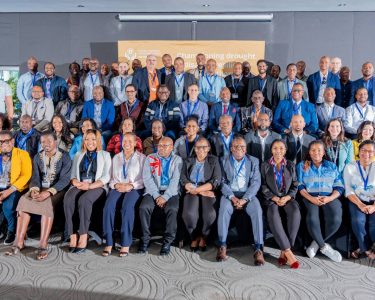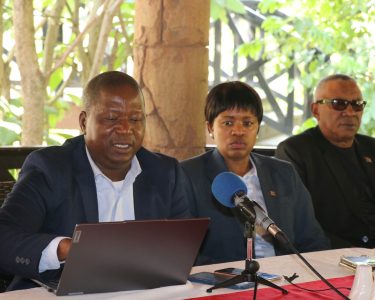
By Ntombi Mhlongo
The Eswatini Energy Regulatory Authority (ESERA) collected about E37.2 million in licence fees in the year ended March 2022.
This is contained in the energy regulator’s annual report which was tabled in parliament. In the report, it is highlighted that ESERA stopped reliance on Government subvention and is wholly funded through license fees for its operations.
The E37.2 million is a significant increase when compared to E22.9 million in the previous financial year. It reflects an increase of about 62.4 per cent.
It is highlighted in the report that the increase is due to the expanded mandate of the Authority to include petroleum licensing. It was mentioned that the license fee rate remained at one per cent of the total revenue for electricity-licensed entities while E0.02 of every volume sold was collected from the petroleum-licensed entities.
Surplus
Meanwhile, the report reflects that ESERA realized a surplus of E0.564 million in the financial year 2021/22 compared to E0.726 million in the previous year.
An amount of E38.8 million was realized in the financial year 2021/2022 compared to E27.1 million in the previous financial year. On the other hand, operating expenses for the authority amounted to E26.4 million and E38.2 million in the financial years 2020/21 and 2021/22, respectively.
Read More: ESERA seeks investors in wind power generation
ESERA’s non-current assets amounted to E6.4 million whilst current assets amounted to E18.2 and current liabilities amounted to E4.0 million in the financial year 2021/2022.
A bulk of the current liabilities relate to short-term funds provided for VAT reverse charges with ERS. In his statement contained in the annual report, ESERA Chief Executive Officer Sikhumbuzo Tsabedze said the 2021/22 financial year had been a very significant year given the numerous developments and initiatives that ensued during that period.
Transitional Period
Tsabedze said the past financial year was a progressive transitional period, lined with robust regulation activities, and also saw the establishment of the petroleum regulation section to ensure technical compliance and reliable supply in the downstream petroleum industry.
“At this point, I am proud to outline the progress that has been made in issuing out relevant licenses to current existing players and prospective new players, with 51 per cent of the applications for petroleum licenses having already been approved whilst the remaining 49 per cent are currently at various stages of being processed in this reporting period,” he said.
He mentioned that he was also happy to outline the successful completion of the 2023 to 2025 ESERA Strategic Plan in line with our expanded role under the Petroleum Act of 2020 and the Energy Regulatory Act of 2007 respectively.
“We also conducted a series of stakeholder engagements that promoted constructive dialogue on salient energy matters in line with our Stakeholder Engagement Framework.”
Renewable generation
“Further to that, considerable progress was made towards rolling out a power wheeling initiative which we believe will ensure a smooth transition to the ultimate market envisaged by the Eswatini Independent Power Producer Policy,” he highlighted.
He also mentioned that significant strides were made towards obtaining new renewable generation capacity through IPPs and that the authority looks forward to accomplishing such a task which will assist the Kingdom of Eswatini with the much-desired security of supply.
Read More: ESERA approves 10.14% electricity tariff hike for EEC
Over and above all the strides and accomplishments of this reporting period, he expressed gratitude to all those who have made ESERA the institution it is today.
Meanwhile, ESERA Board Chairperson Lungile Dlamini said their appointment as a new Board coincided with the expiry of the previous ESERA strategy and therefore their first task was to develop a three-year strategic plan to give future direction.
Petroleum Sector
She said as a Board they were pleased that this was accomplished and also resulted in the redefinition of the authority’s vision statement to address the emerging and future needs of the energy industry.
She mentioned that the new strategy (2022-2025) further addresses the expanded role of the authority to regulate the downstream petroleum sector which came as a result of the promulgated Petroleum Act of 2020.
Read More: Scramble to explain EEC’s E500M over-recovery
“The Board relentlessly pursued the need to create an enabling energy regulatory environment and liberalise the industry. In driving this objective, we are pleased that in the year under review, we concluded the Development of the Small-Scale Embedded Generation Framework (SSEG).”
“The inclusion of SSEG in the local electricity mix is well articulated in the Eswatini Independent Power Producer Policy and has been further developed in response to the electricity industry’s needs to export excess power to the grid,” Dlamini said.
Electricity Network
Furthermore, she mentioned that they concluded the much-needed National Connection Charge Guidelines to establish a standardised approach to dealing with electricity network connections and associated connection charges for end-user customers, ensuring a transparent, fair, and consistent connection charge approach and establishing a set of base connection charge principles.
Dlamini emphasised that the future outlook presents opportunities to roll out the new generation capacity projects and complete key regulatory frameworks.
The envisaged regulatory instruments include the development of mini-grids and off-grid regulatory framework to electrify areas where grid extension is not feasible; the wheeling framework, which will contribute to the liberalization of the electricity market by ensuring third-party usage of the transmission and distribution grid; banning of inefficient lighting products regulations; and the adoption of national transformer distribution standards.
“The Board will further ensure the development of new policies to drive a high-performance culture within the authority,” she mentioned.






